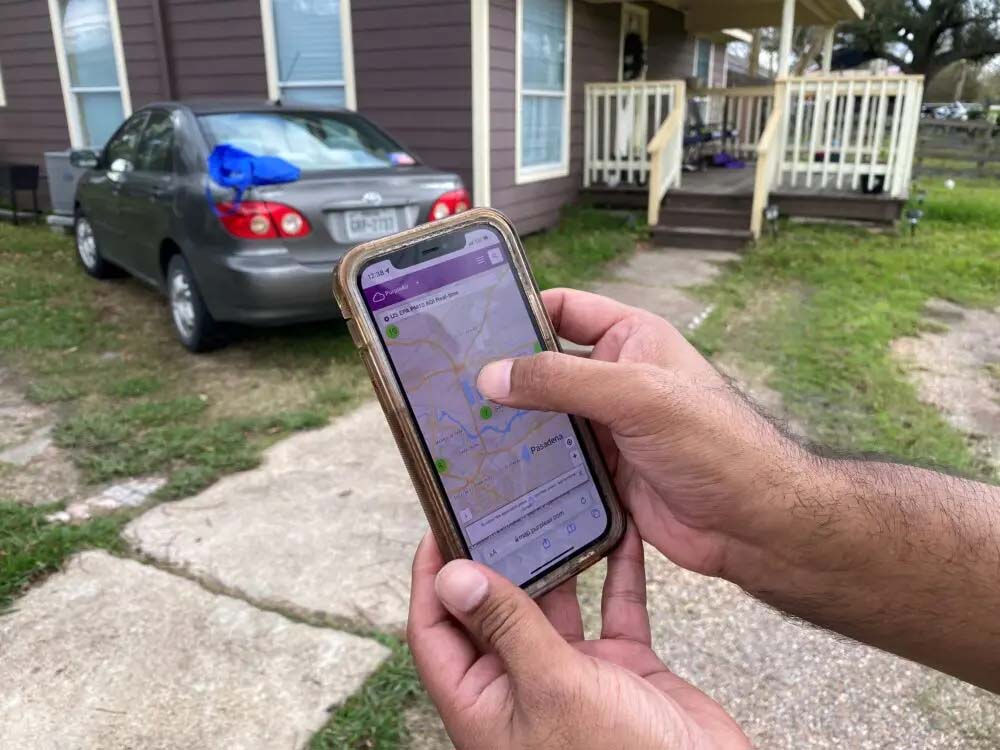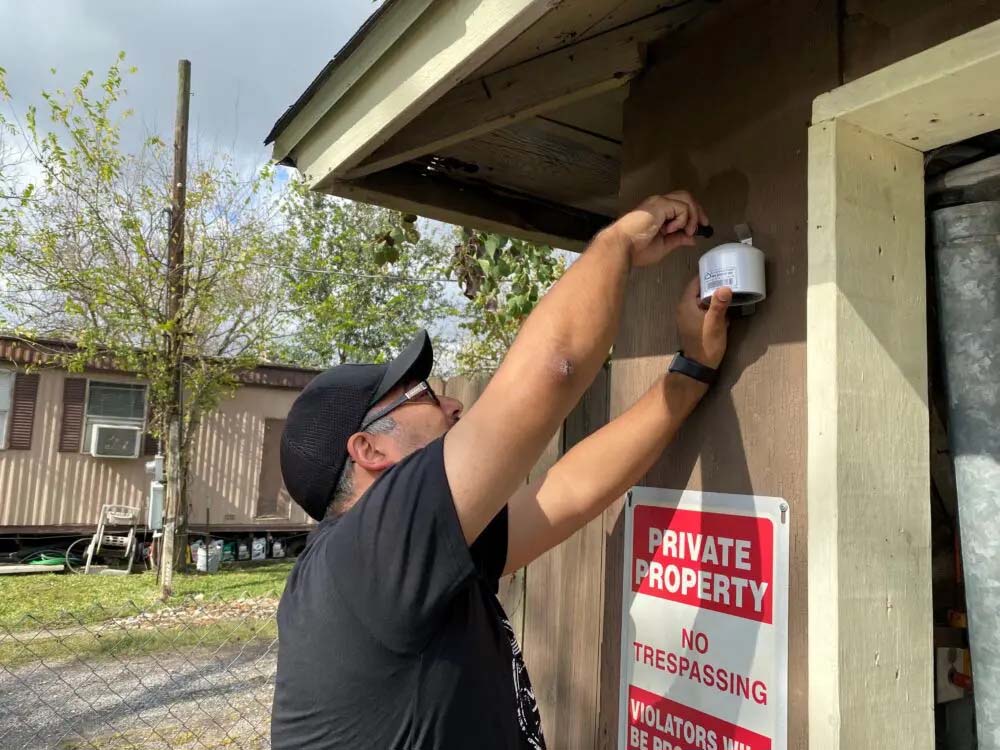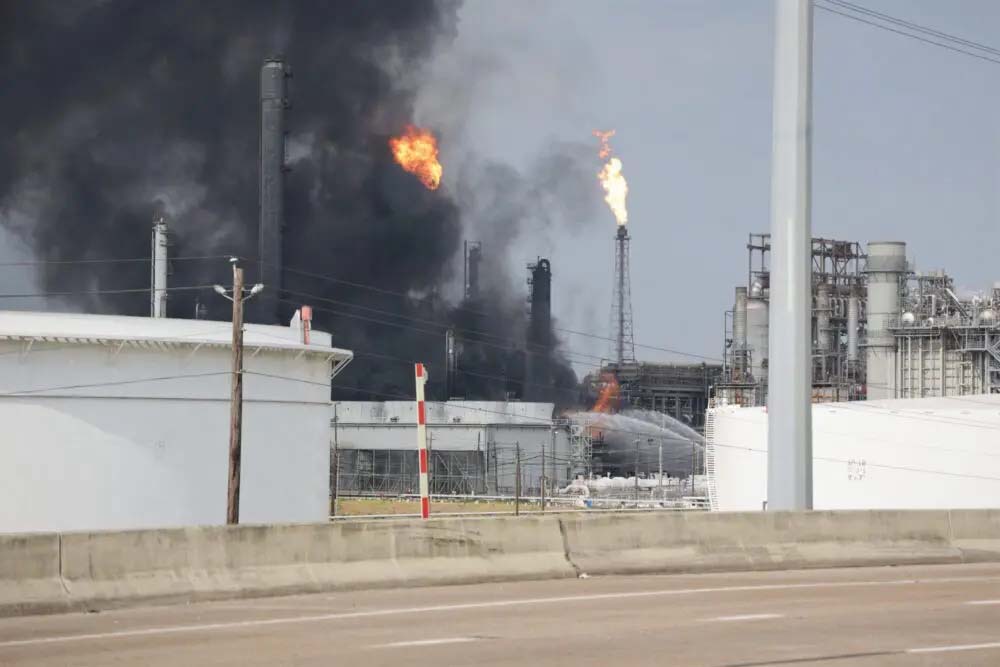From Houston Public Media:
Pleasantville, a majority Black community in Northeast Houston, was one of the first neighborhoods to install their own air monitors back in 2019.
“Early on, it was very novel,” said Pleasantville resident Bridgette Murray. “I wanted to check it every day, every day, every day.”
Murray is the founder of the community-based group Achieving Community Tasks Successfully (ACTS), which led the effort to install the monitors. Now, she checks the monitors if there’s a strange smell or activity and lets residents know through social media if it’s a bad day to be outside.
They monitor for tiny particles called pm 2.5 that can enter the lungs and bloodstream causing serious health impacts like worsening asthma and heart disease.
The Houston area’s high concentration of industry and lack of zoning means that many low-income, communities of color are neighbors with heavy polluters. Past reports show facilities regularly emit more than they’re permitted for, and along with five other metropolitan areas across the country, Houston has been deemed a “severe” violator of federal ozone standards.
To get their own data on what they’re breathing, community groups have been installing their own air monitors over the past several years, building out a vast network across the region. Residents want to use this data to hold state regulators and polluters accountable and to make better decisions about their health.
Murray, from Pleasantville, said the air monitors are helpful for both daily notifications of spikes in pollution as well as longer-term analysis. A few months ago, for example, pollution was blowing in from a fire in Dallas.
“Our monitors were showing how high the pm 2.5 was before the city of Houston even put out the alert,” she said. “So there are those kinds of incidents that we can kind of get in front of.”

Community air monitors display the data on easy-to-read maps that residents can pull up on their phones.
Murray said they also analyze the data for longer-term trends related to pm 2.5 pollution. Those results helped them get the state environmental agency, the TCEQ, to approve installing an official regulatory-grade monitor in Pleasantville, which can be used for enforcement.
“We will have better access to federally regulated information,” she said. “And it’s considered actionable, versus the information that we collect, they normally would not consider it actionable, but maybe further investigation.”
That further investigation is where the county or city of Houston can come in, according to Loren Hopkins, the Chief Environmental Science Officer at the Houston Health Department.
“We just don’t have enough monitors to cover the city, and they’re very expensive,” she said. “If we spent all of our money on monitors, then we wouldn’t have any of the funds to work on the solution, which is enforcement of the permits and things like that.”
Hopkins said community air monitors can help fill in those gaps.
One difficulty with air monitoring in Houston is that because of the lack of zoning, polluters like concrete batch plants are often tucked into neighborhoods, making it difficult to capture their impact on surrounding homes with the existing official monitors that are spaced much further apart.
“The metal recyclers or the concrete batch plants or things like that, they are hyperlocal pollutants,” Hopkins said. “You could have concentrations [of pollutants] that fall off within like a half mile from that source, and so the only way to really get a handle on what is going on in a community like that is to have more monitors.”
The impact of these smaller-scale polluters on communities is something that also stands out to Anthony D’Souza, the Research and Policy Coordinator from the non-profit Air Alliance Houston. He’s been analyzing data from the past year in five different communities where Air Alliance Houston has set up monitoring networks. They found that several communities had pollution levels that were above federal standards.
“The key takeaway is it really depends on the community and the pollutants being monitored,” D’Souza said.
For example, while Galena Park in east Harris County had the highest levels of nitrogen oxides, Gulfton, in southwest Houston, had the highest levels of ozone pollution.

Juan Flores with Air Alliance Houston installs a PurpleAir monitor at a home in Jacinto City.
One thing that surprised D’Souza is that one monitor in Houston’s Near Northside/Northline neighborhoods registered the highest levels of pm 2.5 of anywhere in the network. Those neighborhoods also had one of the highest average levels of air pollution from volatile organic compounds, or VOCs, which come from things like vehicle exhaust and refineries.
“Those communities don’t have large petrochemical refineries, or these large industrial complexes, like Pasadena or Galena Park,” D’Souza said. “That was something that really caught our eye.”
Now Air Alliance Houston is working with each community to come up with action plans based on their data. One use would be to help prevent further industrial expansion in the area.
“Communities like Galena Park could use the data when industrial permits come up for renewal,” he said.
D’Souza said the next challenge is honing in on what’s causing high levels of air pollution.
“One of the biggest frustrations that we and community members have is that we can’t exactly find a bad actor to target when we capture these spikes,” he said. “We can look at a general area, but we can’t really pinpoint where the pollution was coming from.”
That was something that Bridgette Murray in Pleasantville brought up as well. Both her group and Air Alliance Houston are looking into technologies that could help provide that type of information in the future.

The fire at Shell’s Deer Park Chemicals facility took place shortly before 3 p.m. in the 5900 block of State Highway 225 in Deer Park at the beginning of May.
Residents say another key use of the air monitors is when fires occur at petrochemical plants in the area.
“When we have incidents, we keep getting the ‘Oh everything’s okay,'” said Carolyn Stone, who lives in Channelview, along the Houston Ship Channel. “Well, we had no way of verifying it.”
Along with Air Alliance Houston, Stone is setting up an air monitor network in Channelview. She said she already saw the benefits when a fire broke out at the Deer Park Shell facility in early May. Stone said that morning the air quality was already bad across the region.
“I had sent out an email, ‘bad air quality day for South Texas,’ and then shortly after I sent that out, the plant blew,” she said.
The smoke was visible from her house. She checked the air monitor throughout the day and it didn’t worsen the already bad air quality.
“It gives us a little a bit of an ability to see something for ourselves and make a decision,” she said.
Stone said the initial monitors have already changed her perception of pollution in the area. She said she thought the air monitor on the other house in Channelview would measure much higher results because of its location next to a tank washing facility. Instead, over the past year, her monitor has regularly had the highest readings.
“It’s a great tool in proving or documenting what we think is happening,” she said. “Or for that matter, it may disprove our perceptions.”














